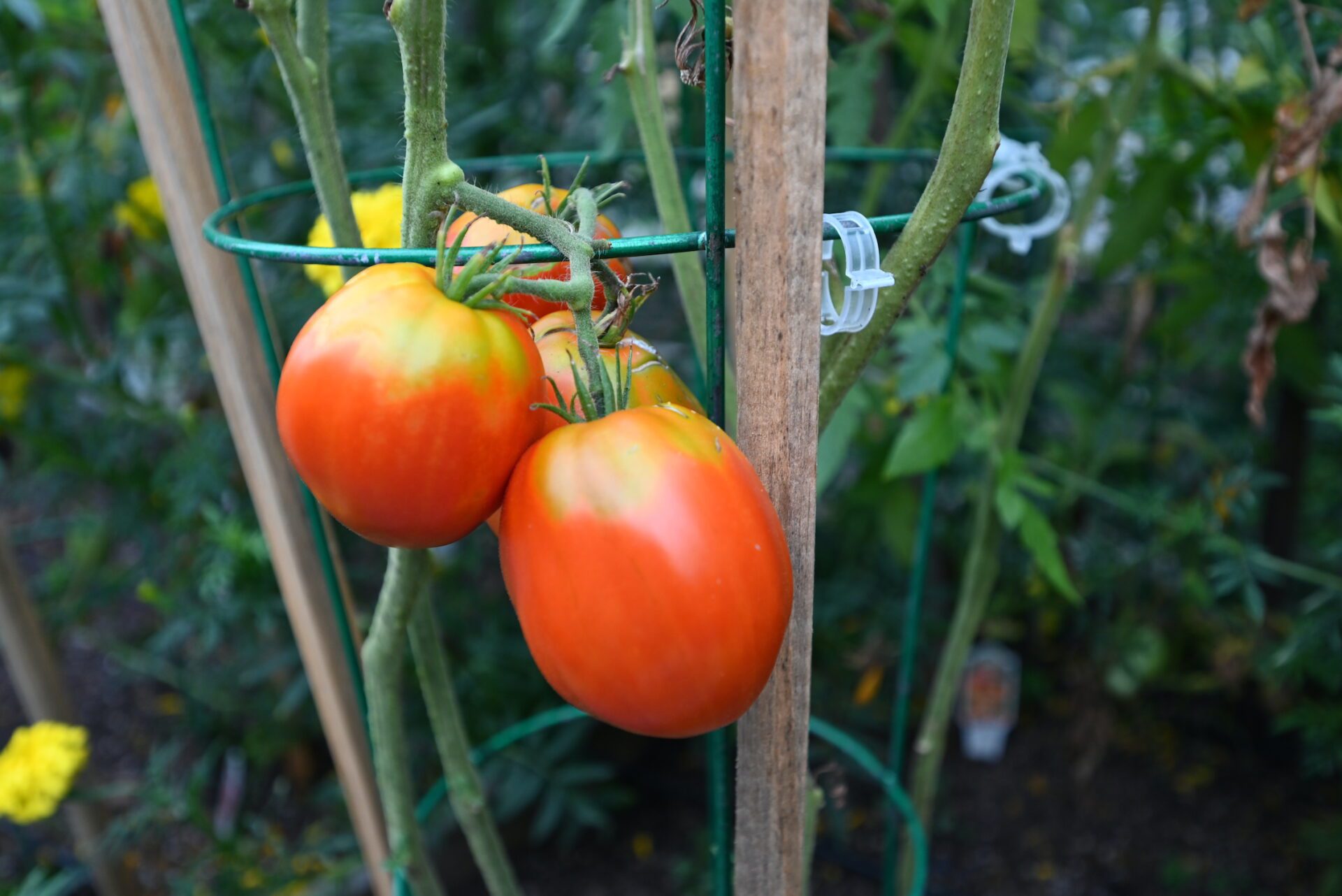Introduction
For many gardeners, enjoying homegrown tomatoes during the summer is a big reason to cultivate a garden. While larger varieties, like heirloom and beefsteak tomatoes, can keep ripening into early fall, the season eventually winds down. To make the most of your harvest, you should pick tomatoes before the first frost hits. In this guide, you’ll find tips on when and how to harvest and store your late-season tomatoes to help them ripen indoors.
Understand Frost and Its Impact on Tomatoes
First, let’s talk about how frost affects your plants. Frost forms a thin layer of ice crystals when temperatures drop below freezing. Knowing the difference between “light frost” and “hard frost” is essential for home gardeners.
A light frost occurs when nighttime temperatures dip to or just below 32°F (0°C). On the other hand, a hard freeze happens when temperatures stay below 28°F (–2°C) for four consecutive hours. A light frost might allow your plants to recover, but a hard frost will typically kill annual tomatoes, especially because they are high in water content.
Freezing temperatures will cause the water inside the plant to expand, damaging cells and leaving your tomatoes mushy and inedible. Common signs of frost damage on your tomato plants include brown or wilted leaves and brown spots on the fruit. To keep your harvest safe, aim to pick your tomatoes before frost arrives.
When to Harvest Tomatoes Early
You don’t have to wait for your tomatoes to reach full ripeness before harvesting, especially if freezing temperatures are approaching. Start picking when you notice the tomatoes changing color from green. They typically show a yellow or blush hue first on the blossom end, which is the side opposite the stem.
It’s perfectly fine to harvest early, but do so in moderation to avoid stressing the plant too much. Keep an eye on your local weather forecasts to find out when the first frost is expected in your area. Plan to harvest your last tomatoes about 1-2 weeks before that frost hits.

Techniques for Harvesting Tomatoes Early
When you’re ready to harvest early, grab your pruners and gloves. Use the pruners to clip the stem about 1-2 inches above where the fruit connects to the vine. Handle the tomatoes carefully to minimize bruising. Ripe tomatoes should feel firm, not squishy, and be close to their mature size. For example, if a beefsteak tomato is only the size of a ripe cherry tomato, it’s not ready to be picked. However, if your tomatoes have reached their mature size—regardless of being green—they are worth harvesting before a frost.
Keep in mind that completely green tomatoes usually do not ripen well indoors. Some varieties, especially smaller ones like cherry tomatoes and certain heirlooms, tend to ripen better off the vine than others. Trust your judgment when selecting tomatoes; you can always sort through them later to separate the stubborn green ones.
Prepare Tomatoes for Indoor Ripening
After you harvest your tomatoes, clean and sort them properly to prevent mold and other problems. Discard any fruit that shows signs of damage, pests, or disease. Remove any overripe or frost-damaged tomatoes that are already mushy. Sort your tomatoes by ripeness and variety to help with the ripening process. Larger varieties take longer to mature, so you wouldn’t want to miss ripe cherry tomatoes hiding beneath green ones. This organization also helps you know when each batch is ready for cooking.
Store your tomatoes in a dark, well-ventilated area with moderate temperature and humidity. Direct sunlight can cause overheating, while excessive moisture can lead to rot. Keep tomatoes in a single layer to avoid moisture buildup. Shallow, breathable containers like cardboard boxes, baskets, or paper bags work well for this purpose. Stay away from plastic bags, as they can trap moisture and promote mold.

Ripening Tomatoes Indoors and Troubleshooting
As tomatoes begin to ripen, they produce ethylene gas, which helps speed up the process. You can encourage ripening by placing them in a paper bag with an ethylene-producing fruit, like an apple or banana. Check your tomatoes daily for readiness and any signs of over-ripening. Ripe tomatoes should display their usual vibrant colors—typically red, orange, or yellow—and feel firm to the touch.
If your tomatoes don’t ripen despite the right conditions, don’t worry. You can still make good use of unripe tomatoes. Try cooking with them by making dishes like fried green tomatoes or adding them to salsas. Unripe tomatoes are also great for pickling, giving you a tangy, flavorful addition to salads and sandwiches.
Conclusion
Harvesting tomatoes early and ripening them indoors can extend your gardening success well into the fall. By understanding frost and knowing when and how to harvest, you can protect your crop and enjoy delicious homegrown tomatoes long after the growing season has ended. With a little care and attention, your indoor ripening efforts can yield a rewarding harvest that enhances your culinary creations. Enjoy your gardening journey!
Contact us today to book a consultation with one of our garden designers and start building your perfect pest-proof garden. Be sure to sign up for our newsletter for more gardening tips and advice!



